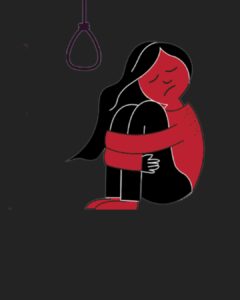
Suicidal Obsessive-Compulsive Disorder (Suicidal OCD) is a specific manifestation of OCD that involves persistent, involuntary thoughts about ending one’s life or harming oneself. These intrusive mental images or ideas can be deeply distressing, often leading to overwhelming fear and emotional turmoil. Unlike general OCD, where the focus is typically on repetitive behaviors or rituals, treatment for Suicidal OCD must address the troubling content of the thoughts themselves — particularly the risk they may pose to the individual.
This form of OCD frequently overlaps with other mental health conditions like anxiety and major depressive disorder, making comprehensive care crucial. Managing Suicidal OCD usually requires a tailored combination of therapeutic interventions, medications, and a solid support system. For some, exposure and response prevention (ERP) therapy can ease the intensity of distressing thoughts. Others may respond better to antidepressants or mood-regulating medications. The ultimate goal is to find a personal path to safety, stability, and emotional wellbeing.
Common Indicators of Suicidal OCD
- Unwanted thoughts about death or self-harm: Individuals may be haunted by recurring, involuntary thoughts related to dying or hurting themselves. These are not desires but are experienced as terrifying mental intrusions that cause deep anxiety.
- Emotional and physical signs: Insomnia, extreme worry, exhaustion, fast-moving thoughts, and symptoms of depression are all frequent companions of this condition.
- Compulsive safety behaviors: In an attempt to prevent perceived danger, individuals might perform repetitive checks — like ensuring sharp objects are hidden or doors are locked — as a way to soothe their anxiety.
- Dual diagnoses: Suicidal OCD may appear alongside other OCD subtypes, which can intensify the challenge of managing symptoms effectively.
- Important: If you or someone you know is dealing with persistent suicidal thoughts, seeking immediate support from a mental health professional is vital.
Obsessive Thoughts in Suicidal OCD
- Fear of dying suddenly: Obsessions may center around accidental death scenarios — such as falling, being hit by a car, or drowning — even if these fears are irrational.
- Shame about the thoughts: Sufferers often fear being judged as fragile, unstable, or cowardly for having suicidal ideation, leading to intense self-criticism.
- Worry over social rejection or stigma: Concerns about how others perceive them — fearing they will be seen as mentally ill or dangerous — can drive isolation.
- Pain caused to loved ones: Many feel consumed by the idea that their death would devastate family or friends, creating an added layer of emotional conflict.
- Fear of harming others indirectly: Some may obsess over the possibility that their actions (or suicide) could traumatize or negatively affect people around them.
- Panic about losing control: There is often a persistent, terrifying worry that they might actually act on these thoughts, even when they don’t want to.
Compulsive Behaviors Linked to Suicidal OCD
- Mental replaying and rumination: People with Suicidal OCD may find themselves stuck in thought loops, trying to make sense of or eliminate the suicidal thoughts through constant mental analysis.
- Repetitive rituals to ‘neutralize’ danger: These behaviors may include counting, repetitive checking, or religious rituals designed to ‘undo’ or protect against perceived threats of death or harm.
- Self-harm as a coping strategy: While not always present, some may resort to physical self-injury or substance use to momentarily escape emotional pain — though this is not the same as a desire to die.
- Avoidance of triggering content or environments: Individuals might steer clear of anything associated with death or suicide — including media, discussions, or even everyday activities — out of fear of triggering an obsessive episode.
- Seeking constant reassurance: A common compulsion is repeatedly asking others or oneself if they are “really suicidal” or “safe.” This can involve ongoing internal checking or external validation to calm fears.
Suicidal OCD is a deeply distressing and often misunderstood form of obsessive-compulsive disorder that revolves around unwanted, intrusive thoughts of suicide or self-harm. These thoughts do not reflect a true desire to die but are instead symptoms of a mental health condition that thrives on fear, guilt, and confusion. What makes Suicidal OCD particularly challenging is the emotional weight it carries — fear of acting on thoughts, fear of judgment, and fear of causing harm to others.
However, with the right combination of therapeutic techniques, medication when necessary, and consistent emotional support, individuals can learn to manage their symptoms and reclaim a sense of peace and control. Healing begins with understanding — knowing that these thoughts are not a choice, but a treatable part of a disorder. If you or someone you know is struggling with symptoms of Suicidal OCD, reaching out for professional help is not just important — it’s life-affirming.
You can write to us: info@emotionoflife.in or reach out us via call 9368503416 or visit our website- www.emotionoflife.in
